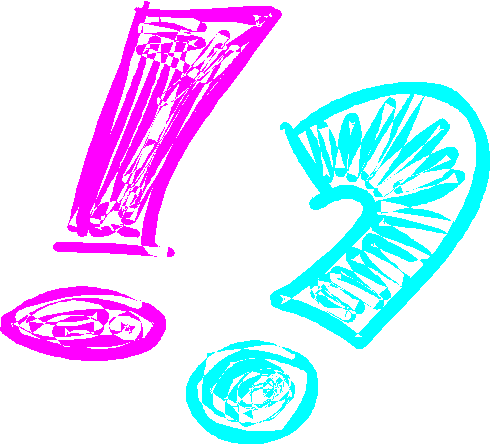Newsletter Design


Spaced Out
One space or two? It may never have occurred to you that
there should even be a question like this. After all, wasn't everyone
always taught that you need two spaces after a sentence when you are
typing?
Well, many of us were taught that. And for good
reason--we were learning to type on a typewriter. Because typewriters
produce monospaced type, putting an extra space after a period or question
mark made sense. Monospaced type is text produced by characters that are
evenly spaced. A "W" takes up just as much room as an
"l". Thus, around skinny letters there was more space than
around wide letters. To clear everything up, it was decided that an extra
space should be added after a sentence to make it easier to see where one
sentence ended and the next began.
However, even in the age of the typewriter,
professionally typeset text only used a single space after a sentence. And
today, we have proportionally spaced fonts. Now, characters are spaced
according to their width, and this is done automatically by our computers.
Since the text does not incorporate extra space around the letters, the
confusion over where the sentences end is eliminated. Thus, we really only
need one space after a period or question mark.
This can be a difficult habit to break, but there are
significant benefits to only using one space. When two spaces are used,
you can create gaps in the block of text, which can make your text less
readable. Your reader may be unconsciously distracted by these holes. Even
worse, you can create "rivers"
of white space in your document. This also makes your text less attractive and professional looking.
Look at these examples. Decide for yourself if you find
the double spacing after the sentences distracting.
One Space
Next time you fuel up, donít top off your gas tank. You may feel that
you are getting every last drop you can into your tank. But you actually
are not putting much more gas into your car. You also are risking
problems ranging from fuel smells in your carís interior, to
eliminating the available space for fuel expansion as it heats. It is
also harmful to the environment, as it causes more vapors to be released
into the atmosphere.
Two Spaces
Next time you fuel up, donít top off your gas tank. You may feel
that you are getting every last drop you can into your tank. But
you actually are not putting much more gas into your car. You also
are risking problems ranging from fuel smells in your carís interior,
to eliminating the available space for fuel expansion as it heats.
It is also harmful to the environment, as it causes more vapors to be
released into the atmosphere.
The difference is subtle, but important. The first
example does not have the distracting gaps that the second example does.
If you examine the text that you read every day--in magazines, books, and
other publications--you will find that the overwhelming majority only use
one space after a sentence.
Of course, no desktop publishing rule would be the same
without having exceptions. You may want to consider using two spaces after
your sentences if you are using a monospaced font, you are typing a book
manuscript, business proposal, or term paper, or are using a typewriter.
Also, follow your gut instinct. If something just doesn't look right one
way, feel free to do whatever it takes to make it look good and to
increase its readability.
